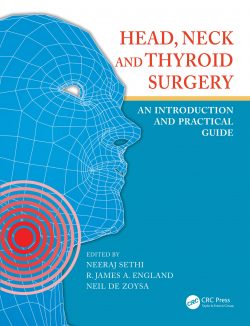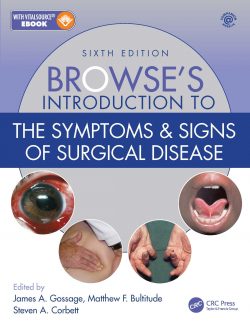This book provides clear practical guidance on all aspects of the surgical treatment of penetrating trauma and aims to foster the type of strategic thinking that can save patients’ lives. The coverage encompasses prehospital care, penetrating injuries to various body regions and specific organs, orthopedic injuries, peripheral arterial injuries, injuries to special groups of patients, including children and the elderly, military injuries, and a range of other topics. Based on their extensive personal experience, expert authors provide step-by-step instructions on evaluation, surgical techniques, and management of perioperative problems. Tips and tricks and technical pearls are highlighted and each chapter includes a list of the most important points to observe. This second edition of Penetrating Trauma has been extensively revised and updated – with inclusion of some entirely new chapters – to take into account the most recent trends in resuscitation, diagnostics, and treatment. It will be an ideal resource for those looking for practical solutions on how to treat injuries surgically.
Prehospital Care, Diagnostic Tools and Resuscitation Strategies.- Surgical Strategies in Penetrating Trauma to Head, Face, and Neck.- Surgical Strategies in Penetrating Trauma to the Chest.- Surgical Strategies in Penetrating Trauma to the Abdomen and Pelvis.- Surgical Strategies in Penetrating Trauma and Orthopedic Injuries.- Peripheral Arterial Injuries.- Other Topics.
“The editors have expanded their focus on surgical techniques to include a more holistic assessment of patient care, with several areas of interest to anesthesiologists. … We highly recommend that anesthesiologists with responsibility for trauma patients read and utilize this book frequently. Velmahos, Degiannis, and Doll are giants in trauma surgery, and their surgical insight on evidencebased approaches to care of the patient with penetrating trauma will prove valuable to anesthesiologists caring for such patients.” (Markus M. Luedi and Richard P. Dutton, Anesthesia & Analgesia, Vol. 124 (3), March, 2017)
“The book is divided into seven sections dealing, successively, with prehospital care and resuscitation, surgical strategies in penetrating trauma to the different anatomic areas from head to pelvis, penetrating trauma to the limbs, and other topics. … the book is useful, complete, readable and relevant, and as such should be of interest to all surgeons dealing with penetrating trauma, and specifcally to those not exposed to these injuries on an everyday basis.” (F. J. Turégano, European Journal of Trauma and Emergency Surgery, Vol. 43, 2017)
“This is the second edition of a comprehensive textbook of trauma care with a focus on the patient suffering penetrating injury. … Resuscitation and operative management are appropriately emphasized, but the scope of the chapters spans the full spectrum of trauma care from field assessment and resuscitation through rehabilitation. Senior surgical trainees and practicing surgeons, particularly those with only occasional contact with patients with penetrating injury, will benefit from this book, originating from an international group of authors.” (David J. Dries, Doody’s Book Reviews, December, 2016)
George Velmahos, MD, PhD, is Division Chief of Trauma, Emergency Surgery, and Surgical Critical Care at Massachusetts General Hospital, Boston, USA. He has been Professor of Surgery at Harvard Medical School since 2004, having previously been Associate Professor of Surgery at the University of Southern California. Dr. Velmahos is a Fellow of the American College of Surgeons, the Royal College of Surgeons of Edinburgh, the Royal College of Physicians and Surgeons of Glasgow, and the American College of Critical Care Medicine. He is Chair of the Education Committee and a Member of the Executive Committee of the American College of Surgeons Committee on Trauma. Alongside his clinical activities, Dr. Velmahos carries out research into traumatic injuries, shock and resuscitation, and bleeding control. He is the author or co-author of more than 250 publications, including four books and 40 book chapters.
Elias Degiannis, MD, PhD, is Head of the Trauma Directorate at the Chris Hani Baragwanath Academic Hospital, Johannesburg, Republic of South Africa. He graduated in Medicine from the Aristotelian University of Thessaloniki, Greece, and completed his training in General Surgery in the UK in 1984. In 1991 he was appointed Senior Lecturer at the University of the Witwatersrand and Senior Consultant at the Chris Hani Baragwanath Academic Hospital. He became an Associate Professor at the University of the Witwatersrand in 2001 and ad hominem Professor of Surgery in 2005. Dr. Degiannis is a member of the Royal College of Physicians and Surgeons of Glasgow, the American College of Surgeons, and the College of Surgeons of South Africa. He established a dedicated Trauma Unit in 2003 and has developed a special research interest in penetrating trauma. He has been decorated with the Silver Cross of the German Armed Forces for his contribution to the training of German military surgeons in penetrating trauma.
Dietrich Doll, MD, PhD, is Vice Head of Surgery and Head of the Coloproctology Department at St. Mary’s Hospital, Vechta, Germany. Dr. Doll is a board-certified general and visceral surgeon who also holds board certification in Proctology and Emergency Medicine and additional international qualifications in Disaster and Mass Casualty Medicine. He has previously worked as First Senior Consultant Surgeon and Vice Head of the Department of Visceral Surgery, Military Hospital Berlin and in the Department of Visceral, Thoracic, and Vascular Surgery at the Philipps University of Marburg, Germany. He obtained his Emergency Medicine Specialist Certificate in 2009 and in 2010 completed his Habilitation at the Philipps University of Marburg. Dr. Doll is a member of the editorial boards of various journals, including the Global Journal of Surgery, and is a reviewer for many leading journals.
This book provides clear practical guidance on all aspects of the surgical treatment of penetrating trauma and aims to foster the type of strategic thinking that can save patients’ lives. The coverage encompasses prehospital care, penetrating injuries to various body regions and specific organs, orthopedic injuries, peripheral arterial injuries, injuries to special groups of patients, including children and the elderly, military injuries, and a range of other topics. Based on their extensive personal experience, expert authors provide step-by-step instructions on evaluation, surgical techniques, and management of perioperative problems. Tips and tricks and technical pearls are highlighted and each chapter includes a list of the most important points to observe.
This second edition of Penetrating Trauma has been extensively revised and updated – with inclusion of some entirely new chapters – to take into account the most recent trends in resuscitation, diagnostics, and treatment. It will be an ideal resource for those looking for practical solutions on how to treat injuries surgically.
Provides clear guidance on surgical treatment of penetrating injuries of many types
Focuses on strategic thinking that can help save lives
Includes tips and tricks and technical pearls from experts with many years of experience





